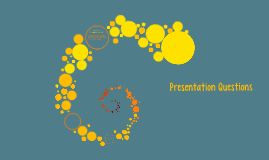Background Summary & Questions (•••)
Transcript: Search and Seizure: the phrase that describes law enforcement's gathering of evidence of a crime. Under the Fourth and Fourteenth Amendments to the U.S. Constitution, any search of a person or his premises (including a vehicle), and any seizure of tangible evidence, must be reasonable. Mapp v. Ohio 1961 The Circumstances This case established the exclusionary rule, requiring illegally obtained evidence to be excluded from trials. The exclusionary rule goes in effect unless the police would have found the evidence anyway, or the police thought they were following fourth amendment. This has caused much controversy because people have been let go despite being proven guilty because the evidence was deemed impermissible. The Ruling Dollree Mapp and her daughter lived in Cleveland, Ohio. After receiving information that an individual wanted in connection with a recent bombing was hiding in Mapp's house, the Cleveland police knocked on her door and demanded entrance. Mapp called her attorney and subsequently refused to let the police in when they failed to produce a search warrant. The police again sought entrance to the house. Although Mapp did not allow them to enter, they gained access by forcibly opening at least one door. Mapp confronted them and demanded to see their warrant. One of the officers held up a piece of paper claiming it was a search warrant. In the course of the basement search, police found a trunk containing "lewd and lascivious" books, pictures, and photographs. As a result, Mapp was arrested for violating Ohio's criminal law prohibiting the possession of obscene materials. At trial, the Ohio court found her guilty of the violation based on the evidence presented by the police. When Mapp's attorney questioned the officers about the alleged warrant and asked for it to be produced, the police were unable or unwilling to do so. Mapp appealed twice to the Supreme Court of the United States. The case came down to this fundamental question: may evidence obtained through a search in violation of the Fourth Amendment be admissible in state criminal proceedings? The Fourth Amendment states "The right of the people to be secure in their persons, houses, papers, and effects, against unreasonable searches and seizures, shall not be violated, and no Warrants shall issue, but upon probable cause . . . and particularly describing the place to be searched, and the persons or things to be seized." The Fourth Amendment, however, does not define when a search or seizure is "unreasonable" nor does it specify how evidence obtained from an "unreasonable" search should be treated. Due Process: The Fifth Amendment says to the federal government that no one shall be "deprived of life, liberty or property without due process of law." By Courtney Williams and Boston Whipple The court (led by Earl Warren) ruled 6-3 in favor of Mapp. Because the police were searching the house illegally, they were going against Boyd v. United States which said that "any forcible and compulsory extortion of a man's own . . . private papers to be used as evidence to convict him of a crime . . . is within the condemnation of . . . [the Fourth Amendment]." However, in Weeks v. United States (1914), the Court ruled that the Fourth Amendment "put the courts of the United States and federal officials . . . under limitations . . . and forever secure[d] the people, their persons, houses, papers and effects against all unreasonable searches and seizures. . . ." which does not bind state officials. In Mapp v. Ohio, the supreme court decided that these rulings should apply to the state governments as well as the federal government. The Issue and Terms Precedent Mapp originally argued that she had a right to the materials because of her first amendment right to free speech but her appeal was denied. She then argued that the police should not have been allowed to use the evidence they found because they were not able to produce a warrant. This went against the right to due process and was unlawful search and seizure as outlined in the fifth and fourth amendments respectively.

















